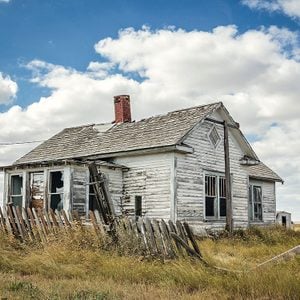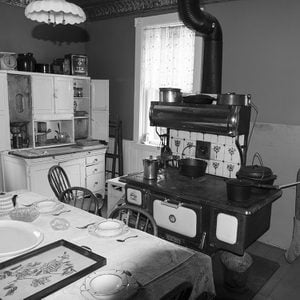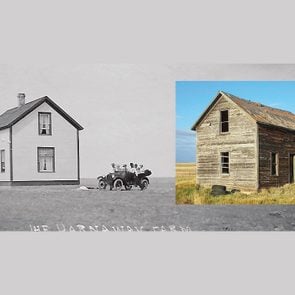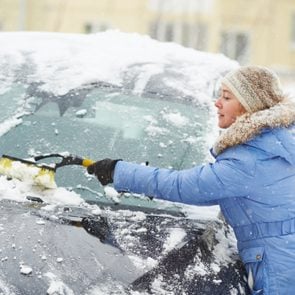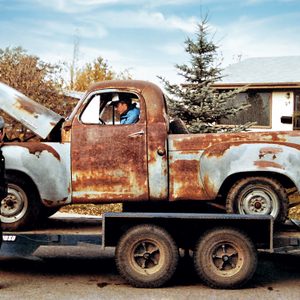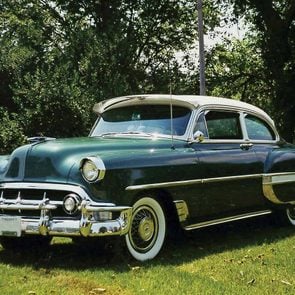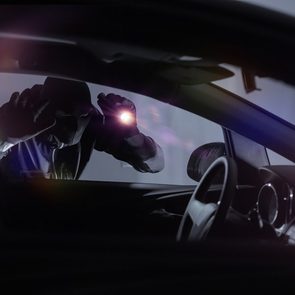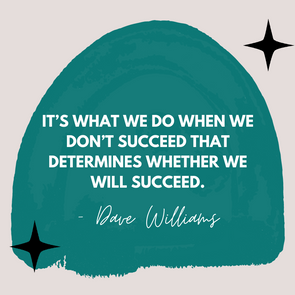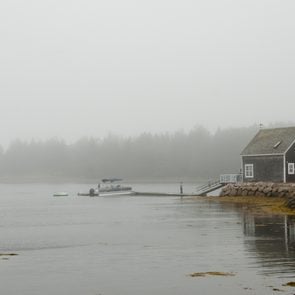2013 was a wacky year for Canadian bargain hunters. It was the year we lost our beloved Zellers, only to find that another brand‘s (very temporary) expansion north of the border could never fill that Zeddy-shaped hole in our hearts.
I still miss a number of lines that were Zellers exclusives at the time it closed. Remember the Alfred Sung holiday decor? Bang for buck, it’s a Christmas collection that’s never been bettered. And I think I’ve still got a pair of sweatshorts from the Mossimo menswear line lurking amongst my gym gear. It was fantastic stuff, with an emphasis on value that was becoming increasingly rare on the Canadian market. The lowest price, after all, was the law.
Ten years on, the return of Zellers couldn’t be better timed. In the midst of rampant inflation, we could all use another wallet-friendly option for housewares and apparel (yes, even sweatshorts). It will look a little different from the Zellers we’re used to, however.
Rather than standalone stores, the 25 Zellers locations that have just been announced are opening within existing Hudson’s Bay locations. That said, they’re going to be a good size—between 8,000 and 10,000 square feet. Here’s where you’ll find them.
The New Zellers Locations
British Columbia
- Pacific Centre, Downtown Vancouver
- Aberdeen Mall, Kamloops
- Guildford Town Centre, Surrey
- 7 Oaks Shopping Centre, Abbotsford
Alberta
- Kingsway Garden Mall, Edmonton
- Medicine Hat Mall, Medicine Hat
- Sunridge Mall, Calgary
Saskatchewan
- Midtown Plaza, Saskatoon
Manitoba
- St Vital, Winnipeg
Ontario
- Erin Mills, Mississauga
- Burlington Mall, Burlington
- White Oaks Mall, London
- Scarborough Town Centre, Scarborough
- Pen Centre Shopping Plaza, St. Catharines
- Cambridge Centre, Cambridge
- Rideau Center, Ottawa
- St. Laurent Center, Ottawa
- Cataraqui Town Centre, Kingston
Quebec
- Place Rosemère, Rosemère
- Galeries d’Anjou, Ville Anjou
- Carrefour de l’Estrie, Sherbrooke
- Les Promenades Gatineau, Gatineau
- Les Galeries de la Capitale, Quebec City
Nova Scotia
- Micmac Mall, Dartmouth
- Mayflower Shopping Mall, Sydney
Even if you can’t find a location within driving distance, you’ll be able to shop Zellers merch online for the first time in the brand’s history. Both the online shopping and Zellers store locations are set to open in “early 2023.”
Next, check out the best apps to save money on groceries.
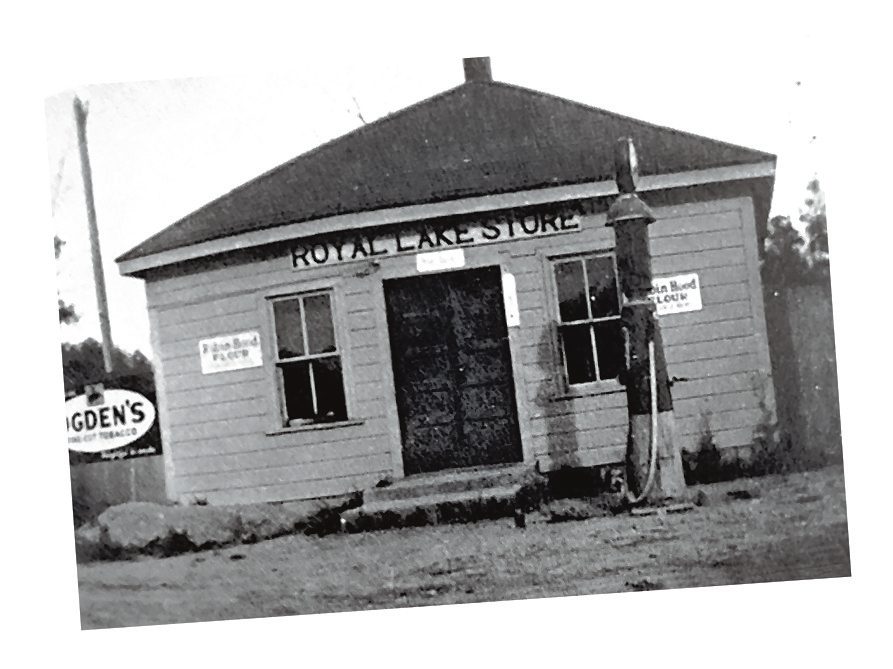
What the Royal Lake Store was like
Royal Lake Store was a country store located 12 miles west of Leask in central Saskatchewan. It was built by Hungarian immigrants in the 1930s and, after changing ownership several times, closed in 1956.
During those years, there was a family living on every quarter section of land. Travel into Leask was lengthy and difficult, so there was a definite need for the services a country store provided. Gas pumps were installed to further meet the needs of the community. Travellers on their way to Emerald Lake Resort often stopped for gas and groceries.
The building was 24 by 30 feet in size with cedar shingles and wood siding. It was painted a cream colour with green trim. Inside, the walls were plastered then calcimined (whitewashed).
A tall board fence surrounded the store on three sides. Inside the fenced area there was a garage, a warehouse and a shed for barrels of coal oil. A small log barn housed the family cow.
An ice house was filled with blocks of ice that were cut from Royal Lake in the winter and packed in sawdust. A metal insulated cooler inside the store was used to keep grocery items cool, using these blocks of ice throughout the summer months.
Two-thirds of the building was used as the store and the other third was used for living quarters. The living area was divided into two rooms, a combined kitchen and dining area, and a bedroom. A dirt cellar underneath the living area provided further cool storage. The store part was heated by wood and the living area was warmed by the cook stove. On cold days, patrons would stand around the wood heater in the store to warm up and swap stories.
There was a hitching post out front to tie your horse, but many patrons just walked there in the summer. The store was open Monday through Saturday, as Sundays were reserved for going to church.
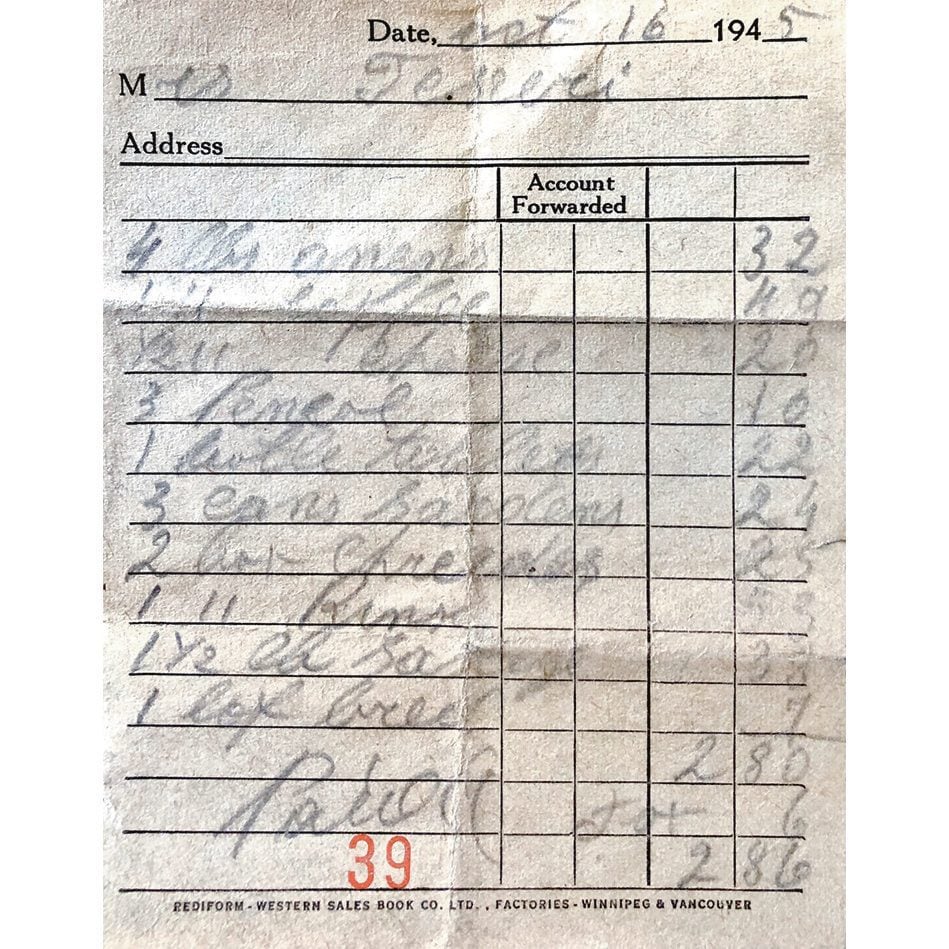
The store served as the hub of country life
Mail was brought to the store from Leask twice a week. These were the busiest shopping days and it was also a good time to visit with neighbours. Bills were written out by hand. Many items came in bulk, not prepackaged, and needed to be weighed and bagged when a purchase was made.
My husband’s grandma made purchases at Royal Lake Store in the 1940s including onions, coffee, cheese, sardines, sausage and bread. My mother-in-law could buy two chocolate bars for five cents at the store when she was a kid in the ’30s. She had never seen candy before and didn’t know what to do with it.
Customers often exchanged goods they had for things they needed. They would bring in eggs and butter to trade for coffee or tea. My own grandma often walked to the store with a grape basket full of eggs to trade for other items.
Jars of candy sat behind the counter. My husband’s uncle remembers being just tall enough as a young boy to reach up and place a coin on the counter to buy some candy. My brother-in-law fondly remembers getting a raw wiener given to him by the store owner.
Wooden crates of soda pop in glass bottles sat stacked behind the fence. Occasionally, a kid would reach through the fence, grab a bottle of pop, drink it and then put the empty bottle back in the case. This did not go over well when the owner found out.

What remains of the Royal Lake Store
My in-laws have owned the land where the store once stood since 1956. Only the outer shell of the main store building remains standing. The other buildings have been moved to use for other purposes or torn down over the years. The gas pump remained in its original location for years until sadly it was vandalized and parts of it were stolen.

Royal Lake today
Royal Lake itself is about a half mile as the crow flies from where the store was. In the 1920s and 1930s, the lake was a popular picnic, fishing and boating spot. It sported a sandy beach and a pavilion that was built over the water. Dances were held there on Friday nights with music provided by local musicians.
Eventually, the lake water went down and trees and vegetation grew into the areas once used for recreation. The war broke out and people moved on. A new road was built that didn’t go right by there anymore. The lake isn’t accessible today to boats or vehicles, but the view of it is still beautiful.
The mental images of the store customers standing around the wood stove visiting and people happily dancing the night away at the pavilion on the lake are my favourites. These must have been things that the country folk looked forward to back in the day.
Next, discover what Prairie life was like during the Great Depression.
When you go to the auto parts store for replacement parts, the sales clerk will usually quote the price for “economy” grade parts. They’re cheap auto parts but not nearly the same quality as “professional grade” parts. Unless you’re planning to junk the car in a year or so, you’re better off spending more for the better parts.
I learned this lesson the hard way on my minivan with 320,000 km on the clock. I bought “economy” tie rod ends. Big mistake. The suckers wore out in less than a year, forcing me to replace them again. This time around, I bought “professional grade” parts and paid for another alignment, making the economy parts a losing proposition. Thinking that experience was a fluke, I tried again with economy wheel bearings. Same result. Now I won’t touch economy parts.
Learn from my mistakes. Whether you’re doing the repair yourself or having a shop do it, if you expect the repair to last longer than a year, insist on professional-grade parts. They cost far less in the long run.
To really save yourself some money, learn how to find the cheapest gas station near you.
For some people, it sends nails-on-a-chalkboard chills all the way down their spines. For many others, it’s an everyday grooming task. Nail filing is certainly better for your digits than biting or snipping, but the tool you use for the practice is actually way more versatile than you might think.
When the colder months come around, it’s important that you avoid these potentially distastrous winter driving mistakes. That includes pulling out of the driveway without first tackling that thick layer of morning frost. The icy stuff can be a real pain for your morning commute. Even once you get that initial layer of frost and ice off your windshield, your view may still be somewhat obscured. Windshield wipers give you little to no help; just a few scraping streaks across the arctic tundra above your hood.
This is where the nail file comes in clutch. The reason your wipers aren’t doing much is because, over time, they tend to pick up all sorts of particulates that they trawl over on your windshield. Eventually, you’ll have to replace wiper blades, but for the time being, they’re more than usable if you clear them of the gunk. So take your handy nail file, run it up and down each blade thoroughly, and take a peek at the file afterward. You’ll see a whole lot of residue.
Now your blades will fare much better when the flurries start flying, picking up way more traction than before. Of course, this hack won’t do you much good while you’re driving down the highway or when you’re on your 13th year of using a set of wiper blades. But the benefits are well worth a buck at the local pharmacy and a minute of your time.
Next, check out a genius hack to defrost your windshield fast.
Keeping your car clean during the winter may seem like an impossible task. As soon as you wash it, it’s dirty again. That doesn’t mean it’s a waste of time, however, as the salt that’s used to melt snow and ice on roads can eventually cause havoc on your vehicle’s finish. Left unwashed for too long, that salt on your exterior opens the door to oxidation, which can lead to rust. So, how long is “too long”? Experts say how often you wash your car in winter depends on a number of factors.
How Often You Wash Your Car in Winter Depends on Where You Live
If you live in a region where roads are salted during the winter (basically, all of Canada), you should wash your car regularly—about every week or two—according to Morrie’s, a car dealership in Inver Grove Heights, Minnesota. (Here’s a handy checklist to help get your car ready for winter.)
“If the roads look white (because they’re covered with salt), every week would probably be a smart choice. It’s all dependent on conditions, but about every 10 to 14 days is a good rule of thumb,” the dealership notes on its website. Remember that removing salt from the undercarriage is just as important as taking care of the crusty white film that’s visible on the painted surfaces. (Don’t miss these tips on how to get rid of salt stains in your car.)
What Kind of Car Wash is Best?
It’s not just how often you wash your car in winter that counts; the way you wash it also comes into play. Using a handheld pressure wand, start at the top of the vehicle and work your way down. Pay special attention to the car’s wheel wells and underside, as salt and grime tend to collect in the corners of the undercarriage. Rinse and dry as thoroughly as possible. If you opt for a drive-through car wash, be sure it includes an undercarriage wash (you may have to pay extra). Consider treating any potential problem areas with an inexpensive corrosion-inhibitor spray.
Where Do You Park?
You may think that parking your car in a garage helps to keep your vehicle clean and protected from winter’s worst, but that’s not necessarily the case. When the frozen slush melts, the moisture will react with the salt and may actually speed up corrosion.
The Bottom Line
The bottom line in keeping your car clean throughout the winter: Be sure to wash it regularly, taking special care to clean the undercarriage. If possible, ensure the vehicle has enough time to dry before the temperature drops below freezing (and potentially freezes your doors shut!). In addition, to help keep the interior clean, use rubber floor mats to avoid getting all that salty slush on the carpet.
Next, check out the best rust proofing options on the market.
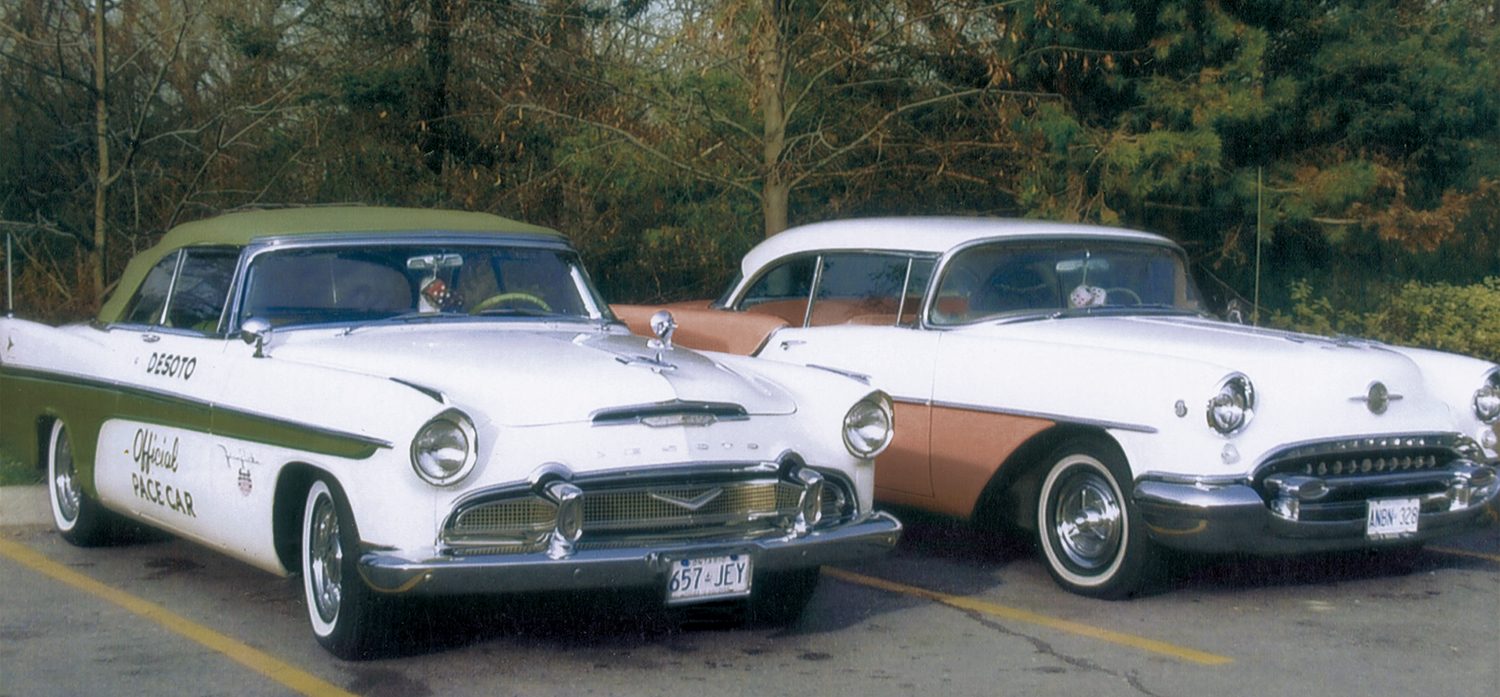
Fast Friends
My husband Bob has always loved classic, old cars. He got his first car when he was 16 years old. It was a 1947 Chevy and he had to borrow an extra $10 to get enough money to pay for it. In his late teens and into his early 20s, he helped work on his friend’s car, who drove at the annual Canadian National Exhibition (CNE) fair in Toronto. In the ’50s and ’60s, Good Friday was the start of the racing season at the CNE. No matter rain or shine or even snow, we girls would be in the stands, wrapped in blankets, if need be, while our guys worked on getting those jalopies ready for showtime.
Of course, those days have long been over. Bob and I eventually got married, we bought a house and we had kids. When Bob retired in 2000, he treated himself to a 1955 Oldsmobile two-door sedan with a white-coloured top and a coral bottom (above right). Everyone around called it the pink car but Bob nicknamed it his “Baby.”
Our next-door neighbour, Gerry Byrne, was also a car enthusiast. He owned a 1956 De Soto Pacesetter convertible, (above left) and he and Bob became fast friends.
Gerry was a retired mechanic who liked to fix up old cars on his driveway and then sell them. Old cars usually need a lot of different parts, which gave Bob and Gerry a good excuse to go on multiple excursions together. I remember many times when Gerry would come to our front door, telling us he had cabin fever, and he’d ask if Bob could “come out to play?” With a fleeting kiss and jacket half on, Bob would be right out the door and they were off, no matter what the weather was like.
Unlike Gerry’s wife Marg and me, those two never took into consideration the cost of these all-day trips to say Picton or Windsor or Minden to price a paint job on a car, or to New Hamburg for some part or another. Finding old cars in the back of some auto wrecker’s field felt like finding a gold mine to them. Whether it was disconnecting a steering wheel from a cab, a taillight from a rear bumper, or crawling beneath a car to check for a part that was needed, nothing was too much trouble.
Summer evenings were spent going to car cruises, car shows or any other place that like-minded car-lovers gathered to talk and show off their cars.
Sadly, Gerry became ill in 2011 and he sold his De Soto to a collector from his home province of Newfoundland & Labrador. The car was refurbished and became a showpiece there.
After Gerry passed away, Bob still went to car cruises, met with the guys and checked out old cars he hadn’t seen before, but eventually, without Gerry, it just wasn’t the same.
His own Oldsmobile still needed various parts here and there, but he had lost his drive to go searching for them. Bob sold his “Baby” to a fellow who came to look at it, bought it and then trailered it back to a small town outside of Buffalo, New York. This man really enjoys the car and each year since has sent Bob a Christmas card telling him what new things he’s changed or added to it. Bob is happy knowing that the car he got so much joy from is now being enjoyed just as much by its new owner.
Next, read the heartwarming story of the special memories attached to one woman’s 1930 Cadillac Club sedan.
You’re not alone if you’re uncomfortable with having your house depicted on Google Maps. There are home security and safety issues associated with having images of your home shown on the platform.
Luckily, there’s a fix that can help. By deciding to blur out your house on Google Maps, you can ensure that you and your family enjoy the privacy you deserve.
Why Should You Blur Your House on Google Maps?
Privacy is one reason it’s a good idea to blur out your house on Google Maps. The main reason it’s wise to do so is that burglars or stalkers can quickly check out your home online and plot a way inside. Because Google Maps offers a thorough look at your house, it’s easy for people to understand your home layout and figure out how they’d breach your privacy and enter your home. Removing the image of your home from Google Maps is an increasingly popular option for privacy purposes and can provide a greater sense of security.
How to Blur Your House on Google Maps
Now that you know why deciding to blur out house on Google Maps is a wise plan, let’s discuss how you can tackle it. Here are the step-by-step instructions:
- Open Google Maps on your computer—not your smartphone. Unfortunately, this process doesn’t work on smartphone apps and can be cumbersome to complete through a website browser on your phone, so be sure to use a laptop or desktop computer.
- Search for your home address. A picture of your house will most likely appear. Click on that picture. From there, you should see the street view of your home address.
- Click on “Report a Problem.” You’ll find that in the bottom right-hand corner of the screen.
- Select what you want Google to blur out. A red and black box should pop up on your screen, so be sure anything you don’t want to appear fits in that box. Include your home and anything else you don’t want on the internet, such as a detached garage. You can use the buttons on the side to zoom in and out to make this process easier.
- Select what you’re requesting for Google to blur. Choose whatever applies. Google will also prompt you to provide more detail regarding what it is precisely in the image you want to be blurred. Be as specific as possible, and remember, once something is removed, it’s permanent.
- Enter your email address and complete the captcha. Then, submit, and you’re all set.
You should see an email in your inbox from Google telling you that it will review your request and keep you updated when it’s accepted or denied. Google also might email you requesting more information so check your inbox periodically to ensure you get any additional communication.
Once you receive an update that your request has been approved, you’ll feel more secure knowing your home is not in public view on Google Maps. For extra peace of mind, find out how to outsmart porch pirates.
Inspiring Quotes About Getting Older
It all adds up
“The great thing about getting older is that you don’t lose all the other ages you’ve been.” —Madeleine L’Engle, American writer
You own your mindset
“You can’t help getting older, but you don’t have to get old.” —George Burns, American comedian, actor, and musician
Let your skin get tough
“Why are people afraid of getting older? You feel wiser. You feel more mature. You feel like you know yourself better. You would trade that for softer skin? Not me!” —Anna Kournikova, professional tennis player
The hard truth
“If you’re not getting older, you’re dead.” —Tom Petty, American singer
The good news
“The great thing about getting older is that you get a chance to tell the people in your life who matter what they mean to you.” —Mike Love, American singer
Time to relax
“The good thing about getting older is that, as you become less attractive, you have less desire to go out and conquer everyone you see.” —Julian Clary, comedian
Acceptance is key
“I can honestly say I love getting older. Then again, I never put my glasses on before looking in the mirror.” —Cherie Lunghi, actress
The best part
“I’m just getting older and better.” —Neal Schon, guitarist
Just keep going
“Getting older is fine. There is nothing you can do to stop it so you might as well stay on the bus.” —John Byrne, writer
Let it go
“Why would I worry about getting older—what’s to moan about?” —Dawn French, writer
Take it all in
“I think women should start to embrace their age. What’s the alternative to getting older? You die. I can’t change the day I was born. But I can take care of my skin, my body, my mind, and try to live my life and be happy.” —Olivia Munn, actress
Feel the bliss
“As I started getting older, I realized, ‘I’m so happy!’ I didn’t expect this! I wasn’t happy when I was young.” —Jane Fonda, actress
Enjoy the ride
“Getting older and having kids, you learn how to become less serious about it all.” —Lena Headey, actress

More beauty shows
“That’s another great thing about getting older. Your life is written on your face.” —Frances McDormand, actress
Let yourself shine
“I wish I was 100 per cent confident in my own skin. It’s always a process, but getting older, I’ve become more confident.” —Brittany Snow, actress
The best is yet to come
“I love getting older! I really believe that a woman doesn’t reach her peak until her 40s.” —Evangeline Lilly, actress
Learn as you go
“I have a great curiosity to see new things, but not to own them. It’s very peaceful this way, and one of the nice things about getting older.” —Lee Radziwill, socialite
It all works out
“I like getting older. When you’re in your 20s you’re really forging for your future. Things take shape later on.” —Crispin Glover, actor
Savour it all
“Let us never know what old age is. Let us know the happiness time brings, not count the years.” —Ausonius, poet (Discover 40 secrets to a happier life.)
Free your thinking
“Age is a case of mind over matter. If you don’t mind, it don’t matter.” —Satchel Paige, baseball player
The stinky bit
“Age is something that doesn’t matter, unless you are a cheese.” —Luis Bunuel, filmmaker
Stay alive
“Try to keep your soul young and quivering right up to old age.” —George Sand, writer
See the beauty
“Youth is the gift of nature, but age is a work of art.” —Stanislaw Jerzy Lec, writer
If you enjoyed these quotes about getting older, don’t miss our guide to embracing your next milestone birthday.
My mother says I babbled non-stop almost from day one, to the point where they almost named me Brook. Even though I was a tiny child—I’m still under one-and-a-half metres at age 31—I was always the loudest person in the room.
We lived in Langley, B.C. At school, I was a disruptive class clown and a constant daydreamer. It was obvious to my teachers that I wasn’t listening, and they called me on it. In Grade 5, one of them finally raised the issue with my parents. “This girl has to get it together,” he told them. I was a poor reader and writer, lagging behind the class—but mostly it was my absent-mindedness that was worrying him. “She’s so easily distracted; she needs discipline.”
The meeting put the fear into my parents, who gave me extra homework every night and sent me to a tutor in the summer. Those things helped because it wasn’t that I couldn’t learn, I just needed someone to sit with me and make me do it.
Along the way, a few teachers made it clear that they knew I was more than capable, since I aced the occasional assignment when I was actually interested. “You have so much potential. Why are you wasting it?” was a common refrain. Hearing that over and over was painful. I began asking myself the same question.
By the time I was 14, I was punching fist-sized holes in my bedroom wall in reaction to perceived slights. My emotions were in overdrive, and even small setbacks made me feel like my world was crashing down. It filled me with so much despair that I sometimes convinced myself I wanted to die. My parents finally sent me to a therapist, but the only thing I remember from those sessions is her telling me I was heading for juvenile delinquency.
I recognized that the anguish I felt couldn’t be normal, and so at age 16 I begged to be sent to a psychiatrist. He started me on antidepressants and mood stabilizers. Within weeks, I began having intense nightmares—like nothing I’d ever experienced—and my depression actually worsened as I became more agitated.
In Grade 11, I began dating a fellow rebel at our very religious school. Lasting a year and a half, the relationship ended up being one of my longest. I was generally boy crazy, falling in love frequently and indiscriminately. The infatuations were a diversion from my own feelings of inadequacy—and I craved the dopamine rush they provided. Usually, though, I’d lose interest quickly and then want nothing to do with them. Guys would also find my intensity overwhelming.
One day, a friend of mine told me she’d spotted my rebel boyfriend with another girl at a hockey game, and that night I swallowed an entire bottle of Ativan. My mom came home from work and found me stumbling around. She rushed me to the hospital, where I was put on IV fluids, monitored for 24 hours and referred to a child psychiatrist.
For the next couple of years, my parents and doctors closely watched me. Meanwhile, I was just so tired of being told by the adults in my life to simply “snap out of it” and get back on track. While my peers geared up for big and bright futures, I could only see mine disappearing.
At 18, I was on so many medications that, one afternoon while I was doing some filing for my dad at his work, I fell asleep under the desk. He called the psychiatrist and said, “What did you give my kid? She’s totally out of it!”
I temporarily stopped taking all the meds after that—long enough to pick up a little clarity and energy, and pass high school. My view of myself swung between two poles: I was either a genius prodigy or a total failure, bedridden with anxiety and unable to get to class.
After a year at community college to bump up my GPA, I was able to transfer to Simon Fraser University, where I hoped to discover a career I could stick with and find meaningful. I’d be extremely productive for a semester or two but then completely lose interest and push pause on my studies to instead work full-time as a veterinary assistant in my hometown. At the animal hospital, I felt oddly at peace among the chaos of emergencies and big emotions. It kept me distracted from my own problems, at least while I was on shift.
By age 25, I was overwhelmed by a gnawing depression. I began drinking to numb the pain—eventually to the point where I was virtually never sober outside of work. My parents were worried I was going to drink myself to death. So was I. They helped set me up in an intensive rehab and recovery facility, where I spent half a year. I got clean there but experienced a few relapses in the time that followed.
Over the next five years, as I bounced between stability and depressive episodes, I sought answers from medical and mental-health professionals. None of them agreed on what was wrong with me. More than one psychologist told me that I was just a lost young adult struggling to find myself. Doctors told me I had bipolar disorder, borderline personality disorder, premenstrual dysphoric disorder (a more severe form of PMS), anxiety and depression. I had tried treatment for all of those conditions, but nothing had helped.
Then, some hope. Two years ago, a friend referred me to a registered clinical counsellor, Jim Smith, who helped start Langley Youth and Family Services, which specializes in early intervention and preventative counselling. For decades, he had helped patients with suicidal ideation and has a special interest in attention deficit hyperactivity disorder (ADHD).
Initially, Jim guided me to trace back what thoughts provoked a particular emotion, figuring out how to express it in a more controlled way. (The simple idea that your thoughts create your emotions was a revelation to me.) But during our third session, Jim suggested that I might be suffering from ADHD.

The Diagnosis
At first I was confused. I associated ADHD with hyperactive kids and childhood learning disability, but Jim explained that it’s actually a lifelong condition. If you have ADHD as an adult, you had it as a kid—but the vast majority of adults who have it don’t know they do, because they were never diagnosed. My habit of jumping from tangent to tangent when I spoke was typical of people with ADHD, Jim said. He reassured me that the disorder can be successfully managed through counselling, medication and lifestyle changes and suggested I see a doctor who could provide a proper diagnosis and prescribe me something that could help.
I stumbled out of Jim’s office feeling a mix of emotions: shock, but also cautious optimism and relief. The diagnosis made sense, and if he was right, it would explain the driving force behind all of my struggles—the mental anguish, chronic underachievement and the need to self-medicate with alcohol and guys.
Back home, I phoned my mom and told her what Jim had said. At first, she didn’t buy it. She’s heard too many diagnoses before this one and, like me and lots of other people, she associated ADHD with hyperactive boys. As I soon learned, though, girls are significantly underdiagnosed, not just by family members and themselves but by medical professionals, too. Partly, this is because we’re blinded by gender bias. Those mood swings are just girls being girls, or later chalked up to PMS. And due to a combination of how girls’ brains work and that we’re conditioned to internalize hyperactivity and frustration, our ADHD manifests more commonly as getting lost in distractions and daydreams—and is therefore less noticeable.
That night I opened a copy of the DSM-5—the bible of psychiatric disorders—and read the symptoms of ADHD. Impulsiveness, hot temper, mood swings, poor planning, trouble focusing—I ticked every box.
Through counselling with Jim and another registered clinical counsellor named Ted Leavitt, who specializes in ADHD, I learned how cognitive therapy and learning emotional awareness can be complemented by a healthy diet, regular workouts and creative expression to help control symptoms.
But ultimately, these strategies could only take me so far, because ADHD is a neurodevelopmental disorder. Scientists believe it’s caused by a lack of communication between neurons in the brain, especially in the frontal lobes responsible for planning and mood management. And so people with ADHD need medication to keep intense emotions and scattered thoughts in check. Since psychologists can’t prescribe medication, I’d need to find a physician who was experienced with ADHD and willing to prescribe medication to an adult woman with a history of psychiatric ailment and substance use. This was no small task.
The first four doctors I saw refused. They either assumed I was an addict looking for a fix or once again suggested my issues were due to female hormones. My ADHD had slipped through the cracks throughout my whole childhood, and now it was happening again.
The Prescription
But finally, in December 2019, one of my psychologists referred me to Dr. Gurdeep Parhar, who runs one of the very few Canadian ADHD clinics specifically for adults. His office was located less than an hour’s drive away, in Burnaby, B.C.
The first thing I noticed about Dr. Parhar was his shoes: a crocodile pattern in royal-blue velvet. “I’ve got a couple of teenage boys at home and we’re competing for top fashionista around the house,” he joked.
Right away, I knew I’d like him. He and his partner, Anita, run the clinic together—her doctorate is in education, and through initial interviews, she helps piece together a client’s childhood and education history.
Dr. Parhar explained to me that the prescription-drug treatment for ADHD is long-acting psychostimulants that also have mood-stabilizing properties. Giving me a stimulant might sound like pouring gasoline on a fire, but it makes sense when you remember that there’s too little chatter going on between the neurons in an ADHD brain, not too much—a lack that leads, in turn, to dysregulated thoughts and emotions.
After my assessment at the ADHD clinic, I picked up my prescription. You know how people describe what it was like when they tried on glasses for the first time? It’s a shock because they hadn’t realized what they weren’t seeing before. My new medication was like that—like putting on glasses, but for my brain. Within a half-hour of taking that first capsule, my mind was quiet. I’d never had that feeling before. That night, I slept like a baby, and over the next few days I read a book cover to cover for the first time in my life. At the end of a week, I realized I’d gone that entire time without craving a drink.
In six months, I was off the antidepressants I’d been taking more or less continually since I was 16.
Living With Adult ADHD
In the time since my diagnosis, it’s mostly been good. I can concentrate a lot better, and my hyperactivity is reduced. There are, however, some side effects. I get occasional headaches, dry mouth and a diminished sense of creativity.
Like a lot of people with ADHD, creative projects have often been an outlet for me. Sometimes when I’m meditating, I’ll see wild colour patterns in my mind, and I often have to interrupt what I’m doing to get them down on paper. It’s a drag to lose this inspiration, which had become such a big part of my identity, so I’ll occasionally stop taking the pills for a week or so.
Although Dr. Parhar doesn’t recommend taking breaks for everybody, as that can disrupt daily functioning, a short hiatus is safe for those who can manage it. Now that I’ve experienced what a “normal” emotional response is like, I find it easier to remember during those breaks that the mood swings are temporary and that I am not my feelings.
Along with Dr. Parhar, I still see Jim regularly, and Ted has been helping me with organizational skills and career planning. I’m grateful for all the support, and I’m going to need it—because with a renewed optimism about my future, I’m back to taking on life goals. I’m at university to finish my bachelor of science degree, which has been eight years in the making. I’m just six credits short, and I can see the door open at the end of it. My plan is to apply to vet-medicine programs to pursue that vocation as a career.
Of course, at the same time, I’m hedging my bets and indulging other interests. I’m getting my international gemology certification, teaching myself metalsmithing and electroplating in order to create jewellery with gemstones I buy at auctions.
Now that I’m diagnosed and managing my ADHD, artistic pursuits that began as coping mechanisms have morphed into passions. I finally see that my emotions aren’t a flaw, but a strength.
Could You Be Suffering From Adult ADHD?
Around a million Canadians are affected by attention deficit hyperactivity disorder (ADHD), a neurological condition that shows itself in childhood, by the age of 12, with behaviours that include physical hyperactivity, inability to follow instructions and disorganization.
Over the past couple decades, the rates of ADHD diagnoses have been increasing, but this is likely not due to an actual uptick in the condition. According to Dr. Gurdeep Parhar, who co-runs the Adult ADHD clinic at Pacific Coast Recovery Care in Burnaby, B.C., a growing awareness of ADHD among physicians and in the general population has led to fewer missed diagnoses. Among those overlooked, girls and women are vastly overrepresented. Children diagnosed with ADHD are 2.5 to 1 in favour of boys, but by the time they’re adults, the diagnoses are evenly split between genders.
If ADHD isn’t identified in a child, it can be difficult to recognize in adulthood. While children display the telltale behaviours, adults with ADHD develop strategies—using apps to keep themselves organized or working long hours to get things done—and consequently can go undetected. Even before they’re aware they have ADHD, adult sufferers may find their way to meditation and breathing exercises in order to cope with outsized feelings. Eventually, however, these strategies can fail, and untreated ADHD can lead to devastating outcomes, including work problems, relationship breakdowns, traffic accidents, poor credit scores and substance abuse.
If you suspect you might be suffering from ADHD, talk to your physician or see a psychiatrist specializing in the condition. – Bruce Grierson
Next, read the true story of one woman’s mid-life autism diagnosis.
“It came from directly above us,” says Guillemette, now 40, fair-haired, bearded and living in Chilliwack, B.C. “My brother stopped the bike right away, and I just remember looking up, because I thought a street-light transformer had blown.” But it wasn’t anything that could be so easily explained.
Hovering some 20 or 30 metres above them, he says, was a school bus-sized spacecraft. It was oblong in shape, with an underside that glowed like an overheated stove element. The ship moved silently, casting a crimson light on the street below. The two brothers stood speechless as it slipped past them and drifted over a row of houses on the horizon. Then it was gone.
In the decades since, Guillemette and his brother have told countless people this story. Some believed them, but most didn’t. Skepticism of aliens runs deep, after all, and for good reason—despite centuries of supposed sightings, there’s never been any conclusive proof that they exist.
But for Guillemette, the moment was life-altering. He had seen something that no amount of eye rolling was going to change. “There’s not a person on this planet who could tell me that I didn’t see what I saw,” he told me. It was the start of what he describes as a lifelong obsession with UFOs: reading books, watching documentaries and poring over obscure websites and online forums. Eventually he found his way into Canada’s ufology community.
Ufologists (pronounced “yew-fol-o-gists”) are people who study unidentified flying objects. There are an estimated 10,000 amateur ufologists in North America today, and interest is growing.
For decades, ufologists like Guillemette have operated on the fringes of science and academia. They gather in virtual meet-ups and swap videos of strange lights in the night sky on Facebook pages. They carry out their own amateur research. The truth is out there, ufologists insist, if only we’d bother to look.
Canadian UFO sightings
Guillemette’s experience might seem a bit far-fetched. But UFO sightings are surprisingly common. About 10 per cent of Canadians claim to have seen one. On average, there are three Canadian UFO sightings reported every day, according to the Winnipeg organization Ufology Research. The group counted 1,243 sightings in 2020, up nearly 50 per cent from the year before.
“It may be because during the pandemic, people have had more time to look up at the sky,” says Chris Rutkowski, who founded Ufology Research in 1979.
Rutkowski, white haired and bespectacled, runs his volunteer-based research organization out of a home office cluttered with bookshelves, E.T. figurines and Marvin the Martian dolls. Rutkowski has never seen a UFO himself, he told me. He started collecting stories of UFO sightings as an undergraduate student in astronomy at the University of Manitoba back in the 1970s. He spoke with people from all walks of life—from Prairie farmers to airline pilots to radar operators. “It became obvious that there was a very fascinating phenomenon that deserved a little more scientific study,” he says.
In its reports, Ufology Research breaks down cases by the number of witnesses, the colour and shape of the UFO (everything from orbs to boomerangs), the level of “strangeness” (an encounter with “grey-skinned aliens” would be considered highly strange, whereas a single flashing light in the sky would not), the reliability of the sighting (based on the number of witnesses and how well-documented it was) and its duration. In 2020, a typical sighting lasted more than 20 minutes and had between one and two witnesses.
The majority of these events can be explained as aircraft, satellites, drones or simply lens flare on a camera. Still, roughly five per cent of all UFO reports Rutkowski receives remain unresolved. It’s these ones—the ones that can’t be easily pinned down—that get ufologists excited.
The proof
But how does a person prove that UFOs actually exist? For ufologists, that’s always been the conundrum. The truth might be out there—but it’s frustratingly elusive. UFO sightings are usually fleeting. Memories of the events are often shaky, the photographs blurry. Details become unreliable.
Guillemette volunteers as a field investigator with the Mutual UFO Network (MUFON), a U.S. organization with more than 4,000 members. He estimates he spends upwards of 15 hours per week investigating sightings, reading ufology news and producing a monthly podcast on the subject. He does all this with a family (including two kids) and a day job selling insurance to juggle.
“When I first started talking about ufology with my wife, she wasn’t too sure what the deal was,” he admits. But she’s been supportive, he says, sometimes even joining him to scan the night sky outside their home.
Guillemette’s investigations usually start in one of two ways: someone sends a request to the MUFON website or he’s contacted through one of several ufology-focused Facebook groups, such as UFO BC.
Most of the time, he’s able to find a non-UFO explanation. He often sends videos to other volunteers at MUFON who specialize in analyzing computer images. He refers to websites that track the flight patterns of satellites, planes and the International Space Station—the usual suspects when it comes to UFO sightings, he says. Guillemette described a recent case in which a couple reported seeing strange lights hovering above a nearby lake. The lights circled above the lake and then dropped down into the water, only to rise up a moment later and zip away. It turned out to be a plane, he says—filling up with water to fight a nearby forest fire.
But like sightings submitted to Ufology Research, there are some that defy easy explanation. Recently, there have been multiple reports in the Fraser Valley of a triangular-shaped UFO with three lights on its underside, Guillemette says. For cases like this, Guillemette does what he calls a “night watch.” He drags his equipment—a camera, tripod and binoculars—to where the sighting occurred and hunkers down for the evening in hopes of catching a glimpse of something strange.
To date, Guillemette hasn’t tracked down any hard evidence of extraterrestrial life. The mysterious triangular lights continue to elude him—popping up here and there, like a never-ending game of whack-a-mole.
A history of Canadian UFO sightings
People have been seeing mysterious things in the sky for centuries, and likely earlier. There are plenty of cosmic-encounter tales from Indigenous cultures. Take the “Skyman” or “Man from the Sky” legend from the Anishinabe people of central Ontario, a version of which was recorded in 1917 by ethnologist Colonel G.E. Laidlaw. Five hundred years ago, a pair of Ojibwe men stumbled upon a stranger sitting in a grass field. This figure, described as “clean and shining bright,” told the men, “I don’t belong to this land. I dropped down from above, yesterday, so I am here now.” The men invited the Skyman back to their village, where he stayed but was visibly restless. One afternoon, Skyman looked up and said, “It is coming.” The villagers craned their necks and saw something that looked like a bright shining star streak down from the heavens and hover near the ground. Skyman entered the shining star and disappeared from view. The ship then shot back into the sky and faded away.
The first UFO sighting of the modern era is often credited to an American pilot named Kenneth Arnold. On June 24, 1947, Arnold was flying his propeller plane from Yakima to Chehalis, Washington. Midway through his trip, he claimed to have seen nine flying objects lifting off the ground near Mount Rainier and whooshing past him at speeds of more than 1,600 kilometres an hour. They spun like “saucers,” he told newspaper reporters the following day.
After Arnold, Americans began spotting all sorts of unidentified objects overhead. At the same time, the U.S. Air Force started tracking UFO reports through what was called Project Blue Book. The research program ran for nearly 20 years and recorded more than 12,000 sightings. Project Blue Book was shuttered after the military concluded it had found no evidence of UFOs (something ufologists dispute to this day).
The Canadian government launched a similar UFO research program called Project Magnet in 1950. A UFO observatory was even built in Shirleys Bay, just outside Ottawa. The four-metre-square shed housed instruments including a gamma-ray counter, a magnetometer, a radio receiver and a cluster of antennae. The program was closed just a few years later, with the government concluding that UFOs were “not amenable to scientific inquiry.”
As governments scaled back on research, public interest in UFOs seemed to only grow stronger. In the Nova Scotia fishing village of Shag Harbour, multiple residents reported seeing a glowing object flying over the harbour and then crashing into the water on the night of October 4, 1967. Witnesses reported hearing a whistling sound “like a bomb,” then a “whoosh,” and finally a loud bang. The object was never officially identified.
That same year, in Falcon Lake, Manitoba, mechanic Stefan Michalak claimed to have seen two cigar-shaped glowing ships while on a prospecting trip in the woods. According to Michalak’s account, one of the ships landed, but when he tried to approach it he was badly burned. He went to a nearby hospital with strange grid-like welts across his body. For weeks afterward, Michalak suffered from headaches, blackouts and weight loss.
Governments and universities have started to take the possibility that life exists on other planets more seriously. The field of research known as the Search for Extraterrestrial Intelligence, or SETI, has gained acceptance in academia. SETI research involves pointing giant radio telescopes at distant corners of the galaxy and listening for signals that could be from intelligent life. SETI research has recently gained more steam, fuelled by private donors and the discovery of thousands of Earth-like planets elsewhere in the galaxy. One of the world’s largest telescopes is near Penticton, B.C. In 2019, scientists there made headlines when they recorded mysterious repeating signals from a far-off solar system that remain unexplained.
The quest for answers
One day, will we look back and be amazed that we once thought we were alone in the universe? Maybe. It wasn’t that long ago that scientists believed aliens were living on Mars. In the 19th century, an Italian astronomer named Giovanni Schiaparelli swore that he saw canals on the surface of the red planet. Clearly they’d been dug by someone, he argued (in fact, they were simply features of the planet’s topography). Not long before that, we believed that the entire universe revolved around the Earth. All this is to say that science is forever changing. What was once heretical can eventually become an accepted truth. Or not.
It’s hard to know what to say when someone recounts a UFO sighting. It simply doesn’t jibe with our dominant worldview. Over the course of this story, I talked with three people who had seen unexplainable, mind-boggling objects in the sky. Each spoke candidly about their experience and described it with compelling certainty, even bravery. And each time, I replied with something along the lines of “wow,” which was shorthand for I’m really not sure what to say.
But in a way, I could empathize. As a kid, I had a somewhat similar experience, though it wasn’t exactly a UFO. Here’s what I remember: I was six or seven years old at the time, standing on a neighbour’s back step with a friend who lived down the street. It was early evening, and a thunderstorm had just passed. The air was heavy, the ground still wet. That’s when we saw it: a ball of fire, hovering like a comet about three metres off the ground. It was the size of a basketball and it seemed to glide through the air in a way that defied gravity, as if pulled by a string.
I don’t recall where the fireball went or who we told, if anyone. It’s a memory that’s been cut out from time. But the experience stuck with me. Years later, I pored through books at my university library and found an answer: a phenomenon known as “ball lightning.” There are numerous historic accounts of lightning balls—flying through open windows, shooting out of a fireplace, even floating down the aisle of a church—though there is still no proven scientific explanation. Still, finding a plausible answer was a relief for me.
But maybe the quest for an answer is misguided. Maybe the power of seeing something unexplainable in the sky is that it reminds us that we don’t know everything, and that mysteries still exist. In this way, ufology might be more akin to a modern religion or philosophy—one that’s rooted in the belief that we are not alone and that salvation (in the form of an alien visitor) might still be possible.
“People have a desire to believe that life is out there,” Ufology Research’s Chris Rutkowski told me. “This belief shapes our culture, it shapes our society, and it’s part of who we are. I think we’ve come to hope that there might be somebody out there wanting to communicate with us.”
I asked Jason Guillemette, the ufologist who saw the school bus-sized spacecraft as a kid, when he thought there might be hard evidence that UFOs exist. He talked about a recent news story about two U.S. Air Force pilots who recorded several interactions with what the Pentagon described as an “unidentified aerial phenomenon.” The videos show a round object that resembles a spinning top hovering and then zooming across the pilot’s screen (you can hear one of the pilots drawl “Look at that thing, dude”). According to a New York Times story, the mysterious object had no visible engine or exhaust plumes but was able to reach hypersonic speeds. The videos are worth checking out, but they’re not quite the smoking gun I was looking for.
“I mean irrefutable proof,” I said—proof that would convince even non-ufologists. “I would say definitely within the next five years,” Guillemette eventually predicted. “Five years, for sure.” He paused for a moment, then said: “I mean, hopefully.”
For more explorations into the paranormal, check out Canada’s most haunted places.
© 2021, Maisonneuve. From “I Want To Believe,” by Brad Badelt, from Maisonneuve (June 17, 2021), Maisonneuve.org



